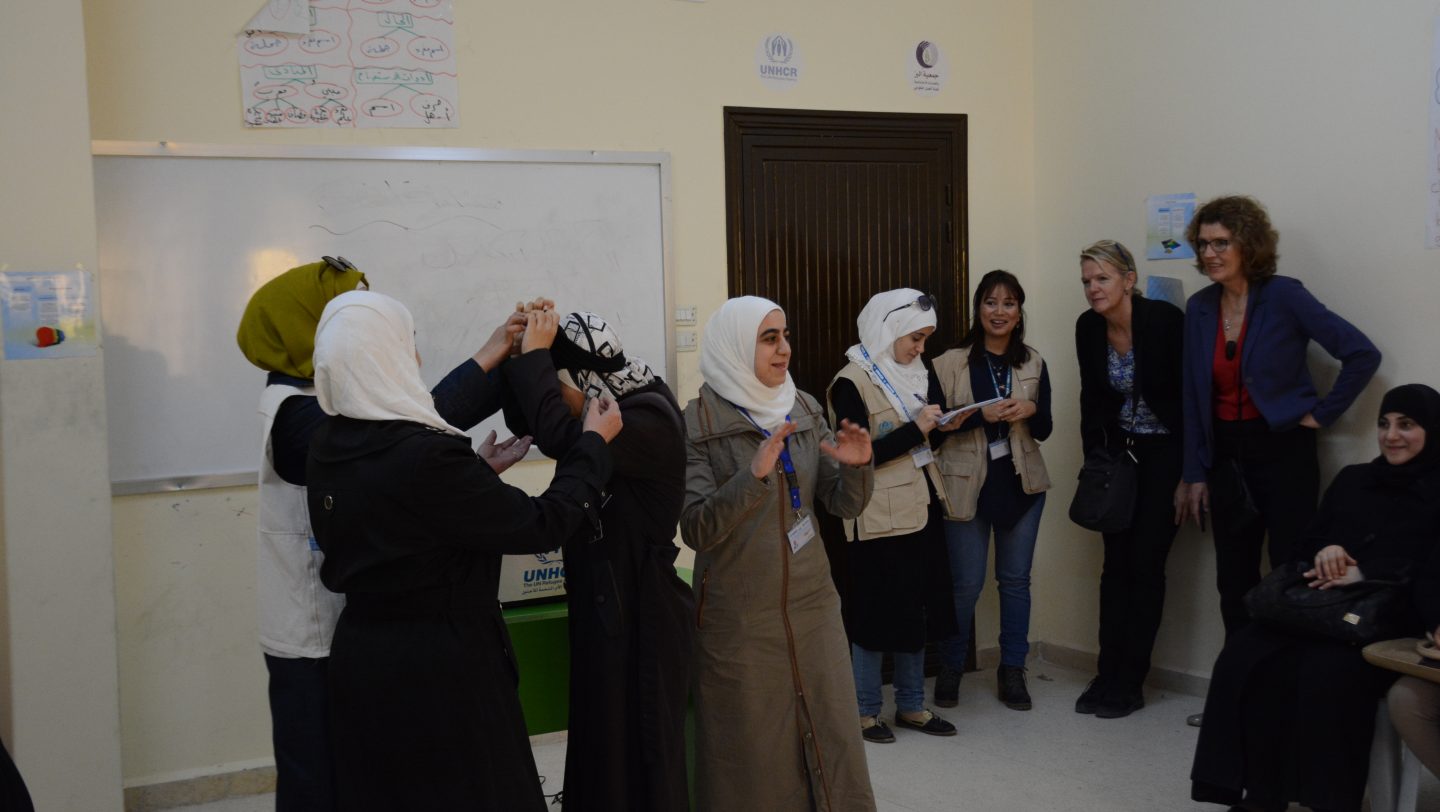Norwegian delegation meets displaced Syrians in Homs city
Norwegian Delegation visited Homs, met with the displaced people and voluntary returnees and explored UNHCR’s response that is helping people restart their lives.

Abeer returned to her house after she was displaced for four years. And she is welcoming the Norwegian delegation team in Al-Mreijeh, Homs. ©UNHCR/O.Kabalan
On October 23rd, UNHCR, the UN Refugee Agency joined the Norwegian Delegation team on a visit to Homs-Syria, which was the first since 2013. The aim of the visit was to witness first-hand the resilience of those who survived the hardships of war and to explore the support UNHCR provides to help people restart their lives.
Since the beginning of Syria crisis, more than half of the population of Homs has been internally displaced. Recently, with the increasing numbers of newly-accessible areas, more and more people are choosing to return to their houses, and they are in urgent need of humanitarian assistance.
“Although destruction is widespread, many houses here are only partially damaged, which is a sign of hope that these houses can be rehabilitated,” said Yngvild Berggrav, Policy Director of Humanitarian Affairs in the Royal Norwegian Ministry of Foreign Affairs during her visit to Homs city.
The Norwegian delegation visited the house of Abeer, a single mother of five children. Abeer shared with the delegation her four-year-long journey of multiple displacements inside and outside of Homs city. After her husband went missing in 2014, the family of six ended up living in a store.
Abeer decided to return to her house in Al-Mreijeh two months ago, and although the house needs a lot of work, for her and her children, their home is irreplaceable. “I am thrilled that I am finally back home. Finally, we are able to live at home with dignity”, said Abeer as her eyes proudly wandered around the rooms in her house.
“I am thrilled that I am finally back home. Finally, we are able to live at home with dignity”
So far in 2017, UNHCR rehabilitated 813 apartments in Homs city and rural Hama to support the people who voluntarily returned to their partly-damaged houses. The rehabilitation work of another 1,435 apartment is ongoing and is planned to be completed by the end of 2017.
UNHCR shelter response has also helped rehabilitate collective and private shelters, providing residence for over 422 families of both internally displaced people and returnees.
The Norwegian delegation visited a collective private shelter in Bustan Al-Diwan where they met Mona, who has been living there with her family for 7 months now. Like Abeer, Mona also is a mother of five and had suffered multiple displacements, but Mona’s house in Al-Bayyada neighborhood is entirely demolished.
UNHCR, with partner NGOs on the ground, are working on the restoration of basic infrastructure in newly-accessible areas including the neighborhoods of Al-Naziheen, Al-Adawieh, Al-Qusour and Jouret Al-Shayyah in order to improve the living conditions for those who chose to return. The population of the three neighborhoods was over 100,000 before the crisis, still many people are not able to return due to destruction, damage and the lack of utilities and services like debris removal.
During their visit, the Norwegian delegation met with Manal, a single mother of two. After losing her husband to the war who was the sole provider for the family, Manal was able to generate income with her strong will and with the help of the sewing kit provided to her by UNHCR.
“Since my husband passed away, life has been so difficult because we no longer have a source of income. The sewing tools enabled me to work independently and to afford a proper living for my children”, Manal said while showing the Norwegian delegation a jacket she made.
The Norwegian delegation also visited a UNHCR community center in Al-Hamedia Neighborhood. The community center is run by our partner NGO Al-Birr and it offers a variety of services including case management, legal referrals, skills development courses, remedial education, life skills courses, social and recreational activities, vocational training activities in addition to health awareness and counseling.






